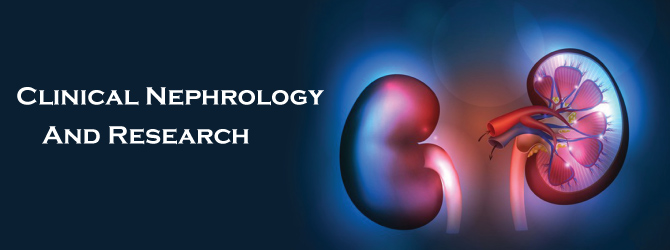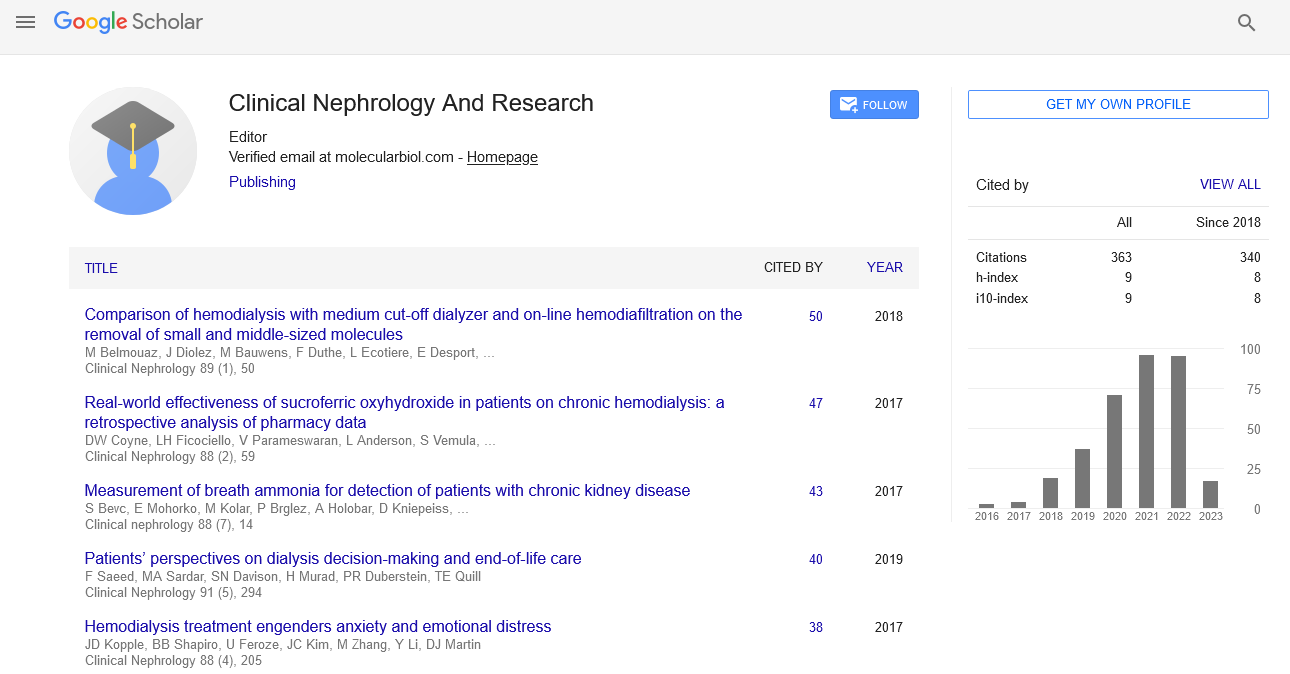
Sign up for email alert when new content gets added: Sign up
Determination of the density of kidney stones according to their chemical composition
5th International Conference on Urology and Renal Health
October 25, 2022 | Webinar
Edgar Daniel Gonzalez Castellanos
Universidad de Guadalajara, Mexico
Posters & Accepted Abstracts: Clin Nephrol Res
Abstract :
Introduction: The prevention of recurrence of renal calculi is important for the treatment, both surgical and medical, of renal lithiasis. Computed tomography to diagnose and infrared spectroscopy to determine the chemical composition of the stones are used to make a comparison of these results; by submitting them to both studies we will create a database, this will be practical and useful since it will corroborate the hypothesis put forward that the average density of urinary stones depends on their chemical composition [1]. Main objective of the study: To determine the density of urinary calculi using computed tomography and compare it with the chemical composition of urinary calculi obtained by infrared spectroscopy; to compare both results and create a database of the mean density of urinary calculi and their chemical composition. Material and methods: analytical cross-sectional descriptive study of patients with kidney stones surgically intervened by percutaneous nephrolithotomy at the Hospital "Valentín Gómez Farías" of the ISSSTE in the period from February 1, 2019 to October 31, 2019. The sample size was non-probabilistic by consecutive cases, using conventional computed tomography with a sensitivity and specificity close to 95% and infrared spectroscopy as study instruments. Results: We performed tomographic density analysis and chemical analysis by spectroscopy of 40 samples of kidney stones obtained by percutaneous nephrolithotripsy in a period ranging from March 4 to September 9, 2019, the density analysis was performed by a single radiologist and chemical analysis by spectroscopy in the laboratory of Physics and Basic Sciences of the University of Guadalajara by the same team, 19 (47.5%) male patients and 21 (52.5%) female patients. The 4 predominant components were uric acid (UA) (21 cases), mean value 408.095 HU (284.391-531.8 HU); uric acid with calcium oxalate (UA OC) (5 cases) mean value 1090.8 HU (837. 281-1344.32UH); calcium oxalate (OC) (11 cases) mean value 1227.0 UH (1056.08- 1397.92UH); calcium oxalate with struvite (OC U) (1 case) with mean value 1575.0 UH (1008.11-2141.89).




